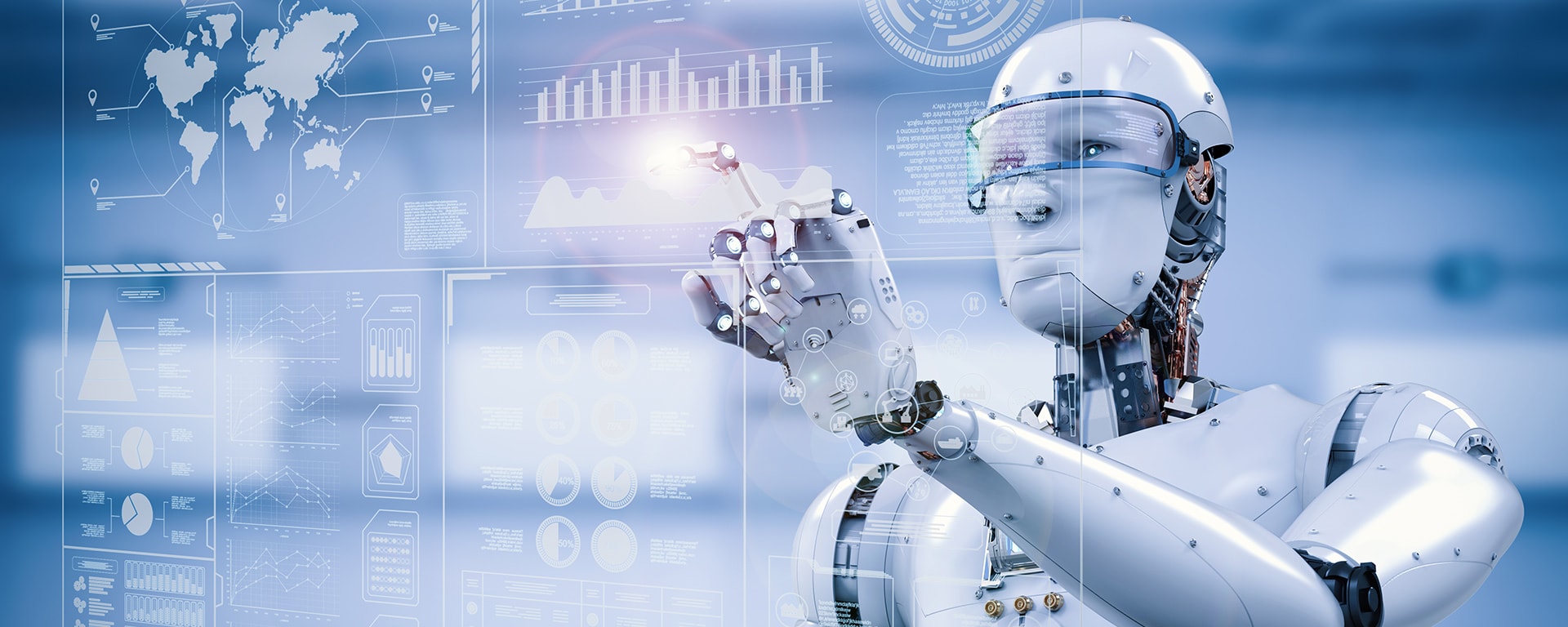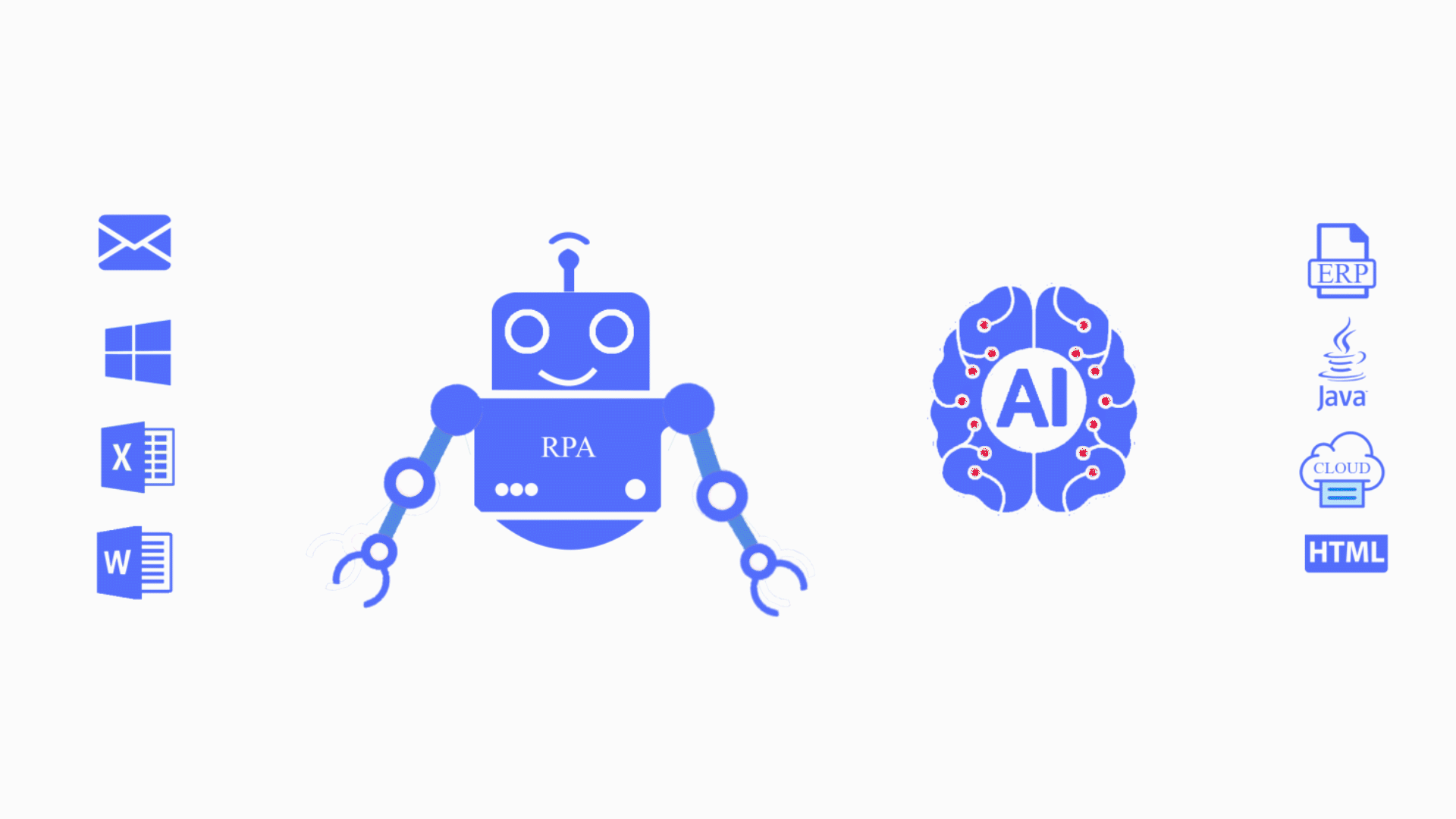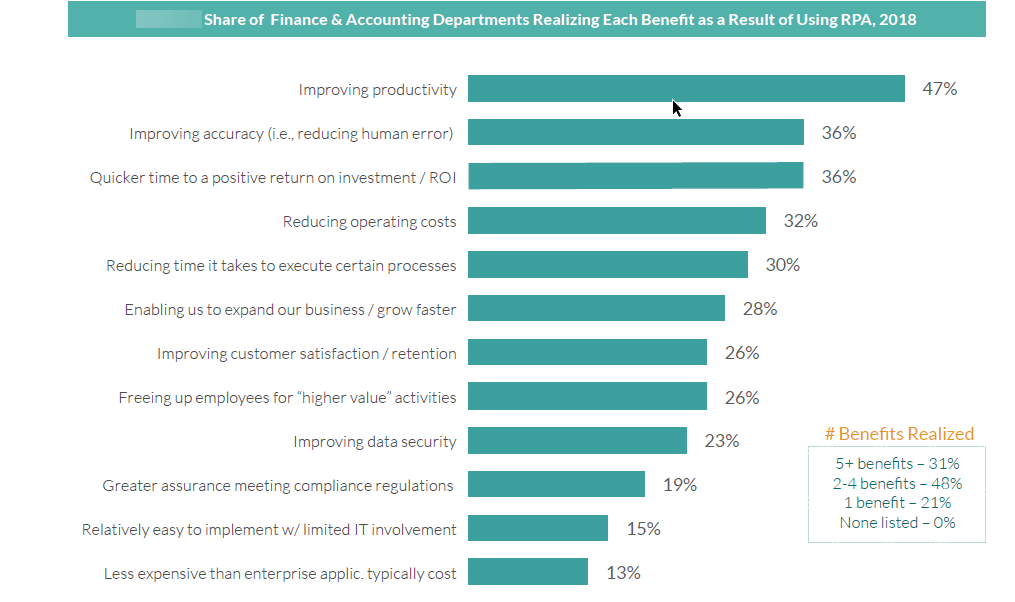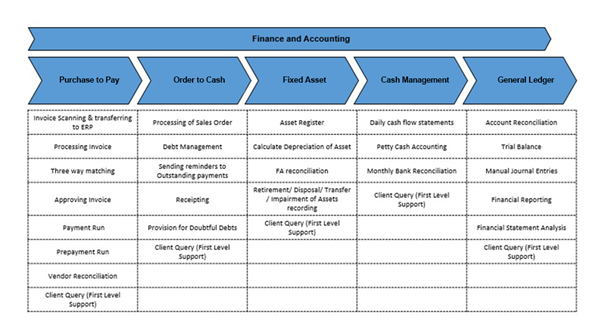ROBOTIC PROCESS AUTOMATION

Robotic Process Automation (RPA) is a process that uses “robots” which are software tools developed to automate business process execution. These software robots help automate routine, repetitive tasks across multiple business applications (e.g., Excel, email, ERP, etc.) without altering a company’s existing IT infrastructure or systems. RPA can be applied by installing the software directly on an employee’s computer and/or deploying it on a server. A key advantage of Robotic Process Automation is that unlike previous IT transformations such as Enterprise Resource Planning (ERP’s), RPA does not require a massive upfront investment.
- Across global markets, medium-sized businesses (MSBs) are looking to Robotic Processing
- Automation (RPA) as a viable approach to improve the efficiency, accuracy and timeliness of business process execution and to lower operational costs.
- RPA is no longer just for large conglomerates. Increasingly, it is being leveraged by smaller organizations that are realizing the same benefits RPA has provided larger institutions for years.
Businesses across the board are realizing that RPA is the next significant digital transformation that will enable employees to stop working on repetitive tasks. Robotic Process Automation allows employees to concentrate on more value adding initiatives, which are imperative for the bottom line of the firm.

BENEFITS
Organizations using RPA solutions typically experience benefits like
- Decreased processing times and accurate output: Robots are designed to perform tasks faster than a human can and do not require sleep. This gives an opportunity to make 24×7 operations possible. Rule based working and no human errors.
- Improved employee morale: As the mundane and arduous tasks are automated, the employees can focus on more critical and high value activities. This also gives an opportunity for the employees to upskill.
- Cost saving : RPA can result into savings ranging from 20%–60% of baseline FTE cost
- Flexibility and scalability: Once a process has been defined as a series of instructions that a software robot can execute, it can be scheduled for a particular time, and as many robots as required can be quickly deployed to perform it. Equally, robots can be quickly reassigned when other, more important processes arise—as each robot is typically capable of performing many types of processes.
- Detailed Audit trail: The tasks performed by a robot can be monitored and recorded at every step, producing valuable data and an audit trail that can support further process improvement and also help with regulatory compliance.
COMPLEMENT RPA WITH INTELLIGENT DATA CAPTURE TO ACHIEVE TOTAL AUTOMATION:
Robotic Process Automation (RPA) has evolved over the years into the Intelligent Automation (IA) realm and resolved the trade-offs related to efficiency and productivity. However both RPA and IA are limited in achieving total automation in case of a paper-based environment. The challenge to derive the required form of quality of the digitized asset renders even hi-tech technologies, such as Robotic Process Automation (RPA) and Intelligent Automation (IA), simply ineffective.
Intelligent Data Capture along with RPA provides a phenomenal success in delivering a successful Digital Transformation for a paper based environment. Intelligent Data Capture enables the information from unstructured data sources such as a PDF, a printout, or even an image to be read and captured and to update databases and downstream systems.
Automation cannot take place without digitization and hence Digitization is the stepping stone to your Digital Transformation journey.
POINT OF HANDSHAKE BETWEEN RPA & OCR:
RPA is applied to fetch the document from a system for executing the Intelligent OCR. After digitization and extraction of details, the required information is either directly posted to a downstream system or handed over to an RPA bot. As per the defined process, the RPA bot either posts the data to an ERP, triggers a workflow, stores the digitized asset in a Document Management System (DMS), or feeds the data into a core enterprise system.
RPA will not eliminate the need to continue to invest in other enabling tools, such as the ERP, workflow and document management solutions, OCR tools etc. A fully automated process is conceivable only when each tool plays its part, and hands over the output from one stage to another.

FINANCE AND ACCOUNTING
The benefits Finance and Accounting departments are realizing through RPA are
- The top three benefits of using RPA in Finance and Accounting cited include improved productivity, improved accuracy and a quicker time to achieving a positive return on investment.
Accuracy is 95+%; cycle times are 3x-4x faster and cost savings are >70%. F&A processes by their very fundamental characteristics are considered as RPA ready. Processes are typically heavily reliant on ERPs or excel for inputs and outputs, addressing a key RPA readiness criteria– one which requires process inputs to be electronic /structured and consistent. However, despite this, each F&A process demonstrates a unique, and sometimes widely divergent amenability to RPA. The key is to drill down into process specific and activity-level characteristics to gain a sharp sense of which processes RPA can be applied to, and estimate the level of benefits that can be expected.
Potential application of automation in the Finance and Accounting world

HEALTH CARE
Healthcare data processing with Robotic Process Automation
RPA helps healthcare providers manage complexity by providing an end-to-end revenue cycle management service that not only promises to accelerate the claims process, but also guarantees full compliance with all relevant healthcare and data privacy regulations, such as the Health Insurance Portability and Accountability Act (HIPAA).
Employees spend many hours manually handling mundane aspects of the claims processing cycle, such as data validation. This not only increases turnaround times and processing costs, but also prevents talented employees from focusing on higher value tasks.
BENEFITS
LIFE / PROPERTY/ CASUALTY INSURANCE:
Enterprises face the challenges of making legacy systems work with the modern IT ecosystems. Insurance is one such domain that is heavily entrenched into legacy and fully reliant on paper-based processes, and therefore undergoing a Digital Transformation seems an unrealizable dream. Intelligent Document Processing and Robotic Process Automation (RPA) provides enterprises with a uniform stage of operations where the old and new intermingle together seamlessly resulting in a harmony. In a heavy legacy laden Insurance sector, RPA enables the enterprise to reduce cycle time and overhead by a significant extent and improve productivity by more than 80.0%.
Quick Links
useful links
Get In Touch
- Address: 1964 Heritage Oaks Street, Las Vegas, NV 89119. U.S.A
- +1 (702) 809 2713
- +1 (702) 451 1125
- info@ardurtechnology.com

